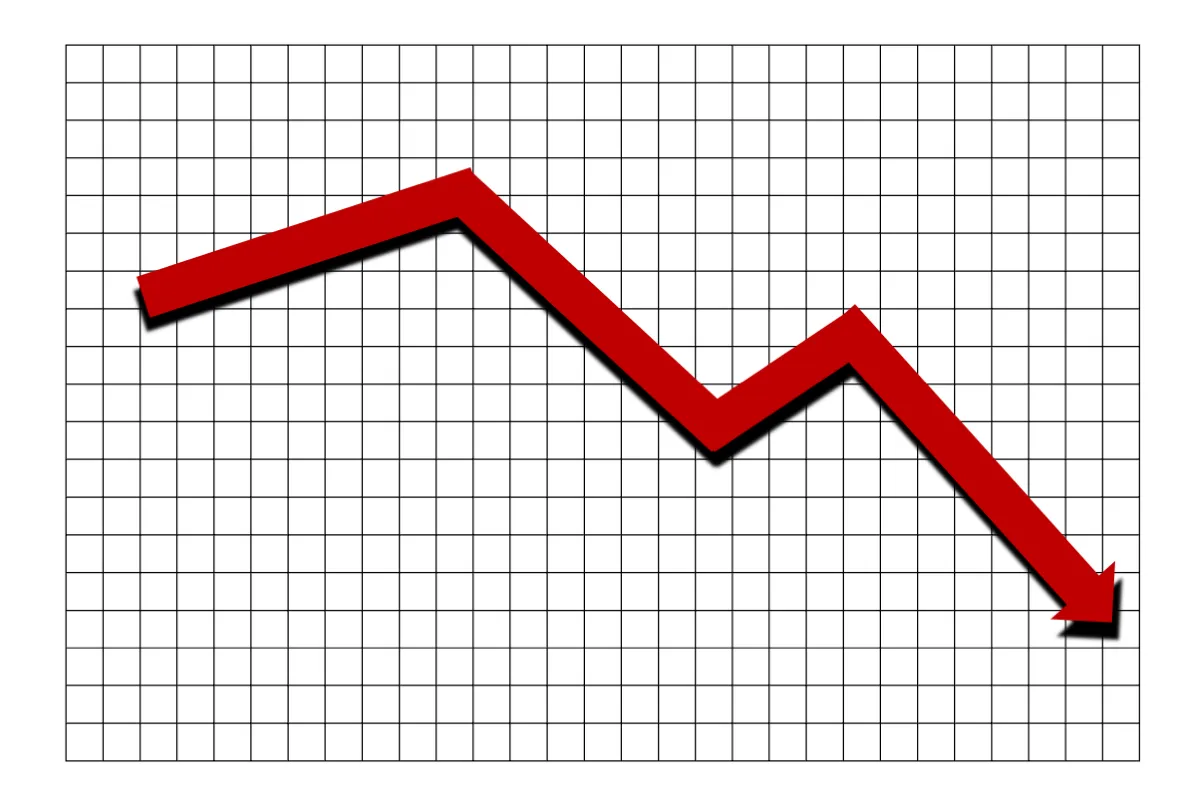As we listen to the debate about our economy in this midterm election year, we can learn something by looking back through history.
And the fact is, that while a president has limited direct control over the economy, our national economy has grown significantly under Democratic presidents, rather than Republican ones.
Let’s go to the numbers
Alan Blinder and Mark Watson, economics professors at Princeton, write, “Since 1933, the economy has grown at an annual average rate of 4.6 percent under Democratic presidents and 2.4 percent under Republicans.”
Additionally, according to the Bureau of Economic Analysis, “the six presidents who have presided over the fastest job growth have all been Democrats – FDR, Truman, Kennedy, Johnson, Carter, and Clinton. Four of the presidents who have presided over the slowest growth have been Republicans – Eisenhower, George H W Bush, George W Bush, and Trump.”
This is true even though the circumstances during their presidencies were different:
- Barack Obama and George W. Bush took office when the economy was in a downturn;
- Harry Truman and Donald Trump inherited a growing economy;
- Lyndon Johnson and Ronald Reagan presided over military buildups;
- and Dwight Eisenhower and Bill Clinton, military drawdowns.
It is a myth that Democrats stimulate the economy by deficit spending and then leave Republicans to clean up the mess. In fact, over the last 40 years, Republican presidents have run up larger deficits than Democrats. To listen to Republican disinformation (GOP fake news), one would think the opposite.
Why are Democratic presidents better for the economy?
One reason Democrats are better with the economy is that they have been more willing to follow historical economic lessons about what policies strengthen the economy for all. Republicans, on the other hand, have embraced economic theories that are nothing more than giveaways to their rich donors – the magical power of tax cuts and deregulation.
And, Democratic presidents have been students of history.
Facing an economic slowdown because of the global pandemic, President Biden and his economic advisers looked to the 1930s for instruction. Specifically, they looked to Franklin Delano Roosevelt's "Three Rs," which serve as a template for dealing with a depressed economy:
- RELIEF: Giving direct aid to reduce the suffering of the poor and the unemployed.
- RECOVERY: Creating jobs and helping businesses grow by restarting the flow of consumer demand.
- REFORM: Reform of the financial system to ease the economic crisis and introducing permanent programs to avoid another depression and insuring against future economic disasters.
FDR came to champion the ideas of John Maynard Keynes. In an economic downturn, when companies and households are caught in a vicious cycle of spending reductions, the government needs to step in and spend to stimulate the economy.
This Keynesian deficit spending theory has made Democratic presidents more effective in responding to crises than Republicans. Everyone points to Republican Herbert Hoover being passive in the face of the Great Depression, but George H.W. Bush was slow to fight the 1990-91 Recession, and George W. Bush was slow to begin fighting the 2007-9 Great Recession.
In fact, Michael Strain, economist at the American Enterprise Institute, has said, “In periods of economic distress, Democrats are more concerned about jobs than Republicans.”
The pandemic has served as a case study.
Donald Trump repeatedly downplayed the coronavirus pandemic. The economy would have experienced a downturn no matter who was president, but the slow and negligent response by Trump and the Republican Senate aggravated this pandemic-driven recession.
Hence, Donald Trump became the first president since Herbert Hoover to preside over a decline in employment.
Unlike Democrats, who typically implement multiple programs at once to improve the economy, Republicans have one single go-to policy: large tax cuts for corporations and the wealthy, based on Ronald Reagan’s famous (or infamous) “trickle down" economic theory. If you follow the dollars, though, it has turned out to be a “flood up” economic reality, sending massive amounts of wealth to the already wealthy.
But what about today’s inflation?
Now we are experiencing high inflation. Republicans running for office this year are blaming this inflation problem on Democrats and the stimulus packages Democrats approved that saved people’s homes and businesses, and put much-needed cash in their pockets for daily expenses. Of course, Republicans wholeheartedly rejected those stimulus packages, even knowing that without those packages the lives of millions would have been ruined.
But there is another more direct reason for our current inflation. According to recent studies of corporate profits, as detailed by Sarah Baron in a column at OtherWords, companies are boosting their profits by keeping prices artificially high, then blaming those prices on inflation. Wrote Baron:
“General Mills hiked its prices five times since June of 2021 alone, and the company saw its net earnings climb 31%. Darden Restaurants, owner of Olive Garden and Longhorn Steakhouse, saw its net sales increase by $140 million. AutoZone saw record sales growth over the past two years, with net income increasing to $810 million.”
And in a recent meeting of the National Association for Business Economics, Federal Reserve Vice Chair Lael Brainard acknowledged that "large increases in retail trade margins in several sectors" is a significant factor behind surging prices.
"The return of retail margins to more normal levels," said Brainard, "could meaningfully help reduce inflationary pressures."
During a recent Congressional hearing, former U.S. Labor Secretary Robert Reich urged Congress and the Biden administration to confront corporate profiteering directly through a windfall profits tax, stronger antitrust enforcement, and temporary price controls.
If President Biden and his administration continue to look to history to guide this economy, they will:
- Focus on creating even more jobs;
- Sideline the Federal Reserve’s Trump-appointed chairman; and
- Hold corporations accountable for taking excessive profit.
Meanwhile, Republicans will continue gaslighting uninformed voters, trying to blame Democrats for inflation, so those same uninformed voters will put Republicans in charge again, thus endangering the global economy.
The Republican economic playbook
But be warned!!
You can be assured that if Republicans take back the House and Senate, the standard Republican Economic Playbook will be resurrected:
Step 1: Republicans get into power and then cut taxes as much as possible on the rich and big corporations.
Step 2: Republicans brag about how the economy has improved on essentially borrowed money, since reduced tax income means that more money must be borrowed to offset the loss in taxes.
Step 3: Republicans notice that less tax money is coming in and cut government spending on programs for the poor and middle class like Medicare and Social Security – which they are already talking about ahead of the midterms.
Step 4: Republicans help their corporate friends pay as little as possible in wages. Republicans also resist raising the minimum wage and resist all wage increases. Income inequality expands. The well-off get richer, and everyone else gets poorer.
Step 5: Republicans avoid much-needed infrastructure spending programs, which would help the nation by providing jobs, growing the economy, and increasing the amount of taxable income which could help pay off debt. Republicans believe Government Spending Is Bad—except on certain things like expensive military weapons.
Step 6: Republicans watch in total “surprise” as small businesses start collapsing, and more and more regular people start defaulting on their mortgages, bank loans, and credit cards. Welcome to another Republican-created recession!
Step 7: Republicans do little to fix the recession, so voters put Democrats back into power, hoping that the Democrats will be able to fix the bad economy. The Democrats increase Government spending with an infrastructure program to counteract the economic slowdown caused by the Republicans. Republicans scream bloody murder about how the Democrats are creating government debt with their spending. As Republicans do this, they ignore the huge amount of government debt which was created by:
- Republican tax cuts;
- The economic slowdown caused by Republican cuts in spending to pay for their tax cuts; and
- The economic slowdown caused by Republicans fighting wage increases and fighting all efforts to implement big infrastructure programs.
Step 8: The economy slowly recovers due to measures put in place by Democrats and fought against by Republicans every step of the way.
Step 9: After years of economic improvement under Democratic leadership, Republicans spend countless millions of dollars trying to convince voters that they will do a better job with the economy than the Democrats did. Voters eventually vote the Republicans back into power.
Step 10: Go to Step 1.
The Bottom Line
The pattern is clear. The evidence is clear. The truism is clear.
If you want the American economy to grow and thrive, don’t let the Republicans near it. Instead,
Entrust the economy to Democrats.
--30--
Written by John James Alexander, a pseudonym for a long-time Kentucky educator.
Comments







